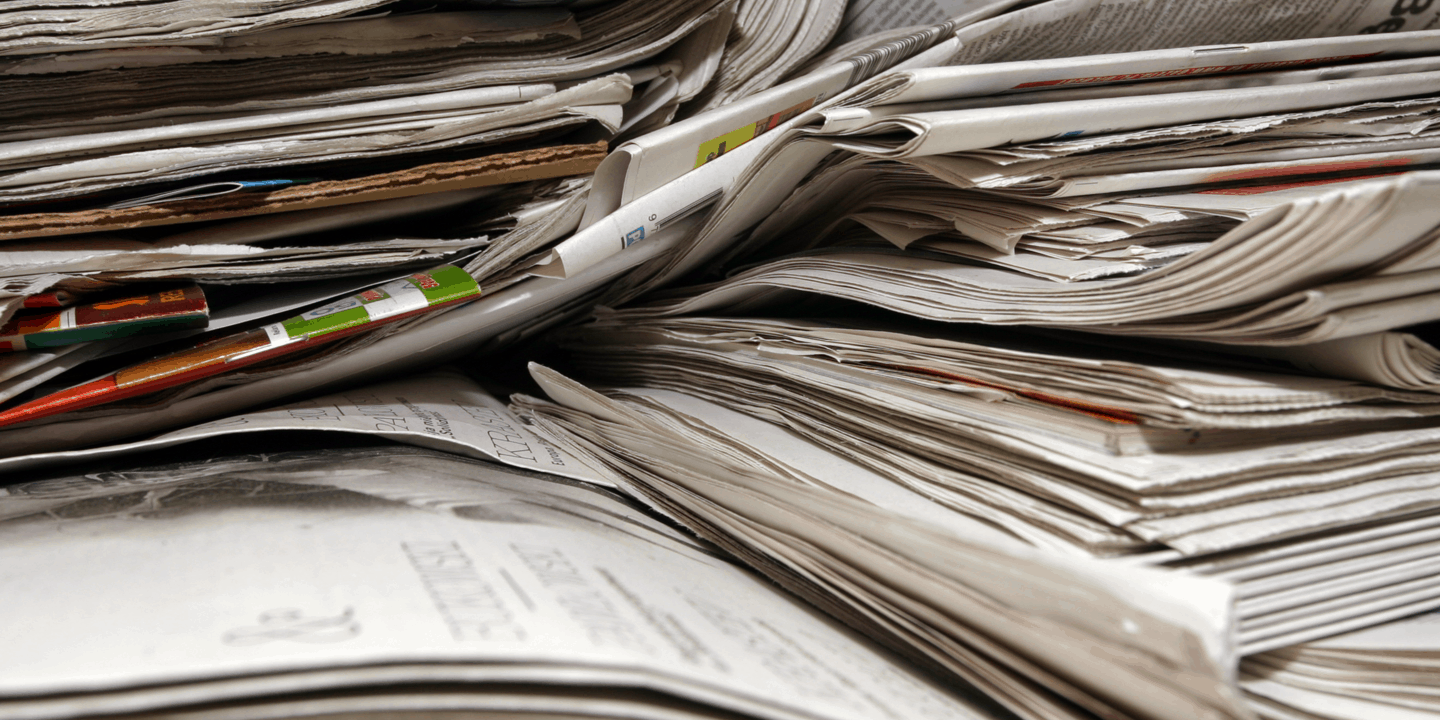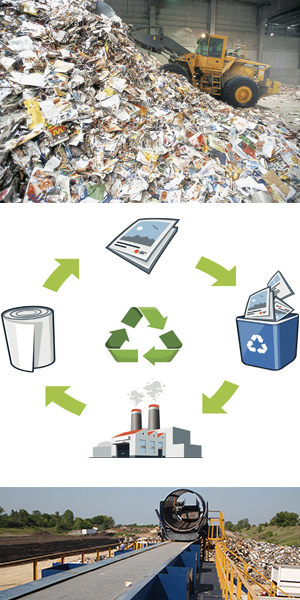One of the most common forms of municipal solid waste (MSW) recycling is paper recycling. Paper is a commonly used resource in the U.S. and recycling this material can significantly benefit the environment. Each ton of recycled paper can save 7,000 gallons of water, 3.5 cubic yards of landfill space, 17 thirty-foot trees and 4,100 kWh of energy. Unfortunately, paper is often tossed into the trash. The amount of wood and paper thrown away each year is enough to heat 50 million homes for 20 years. Paper is a finite resource and a rapidly dwindling one, making recycling all the more important. Paper by the Numbers
- Every year, more than two billion books, 350 million magazines and 24 billion newspapers are published.
- Paper accounts for more than half of all recyclables collected in the U.S.
- Americans recycled 66 percent (46 million tons) of the paper used in 2011.
- In 2011, 37 percent of the fiber used to make new paper products came from recycled sources.
- More than 5,000 products can be made from recycled paper, including masking tape, paper money, globes, bandages, hospital gowns, coffee filters, lampshades, car insulation, animal bedding and egg cartons.
Why Recycle Paper? Paper makes up 28 percent of MSW—more than any other material. Recycling paper conserves our trees, a limited natural resource, and helps control waste disposal issues. Recycling also saves communities and municipalities money on disposal costs. Producing paper from recycled paper is also a cleaner and more efficient process than making paper from trees. Manufacturing with recycled paper eliminates several steps in the process, resulting in less total energy, water and chemical use, as well as lower releases of air and water pollutants. How Is Paper Recycled? Once it is collected, paper is transported to a material recovery facility (MRF) where contaminants such as glass, plastics, paperclips and staples are removed. After the paper is free of contaminants, the material is baled and transported to a paper mill. The fiber is shredded and mixed with water to make pulp, and the pulp is then washed, refined and cleaned before being turned into slush in a beater. Color dyes, coatings and additives are mixed in, and the pulp slush is pumped onto a large moving screen. As the pulp moves down the screen, water is drained away. The resulting paper sheet, or web, is pressed between huge rollers to extract most of the remaining water and to ensure smoothness and uniform thickness. Now semi-dry, the web is run through heated dryer rollers to remove what water remains. The finished paper is then wound into large rolls, which can be 30 feet wide and weight close to 25 tons. A slitter cuts the paper into smaller, more manageable rolls, and the paper is ready for sale and use. Paper Recycling Tips An estimated 87 percent of U.S. residents has access to curbside recycling programs or recycling centers. Here are some suggestions to make your paper recycling more effective:
- Contact your local recycling center and ask what papers they collect and whether you need to pre-sort your recycling
- Organize—clearly label recycling bins and place them in areas that are readily accessible to everyone in the home
- Learn what types of paper are recyclable—magazines, catalogs, telephone books, brochures, pamphlets and booklets are just some of the materials that can be recycled
Tuffman® offers a variety of equipment for material recovery facilities and businesses seeking to recycle paper. From conveyors to sorting stations, Tuffman® products can help make recycling more efficient and cost-effective! Contact us today for more information!








